The Story Behind Super 8
Behind the scenes with Abrams and Spielberg
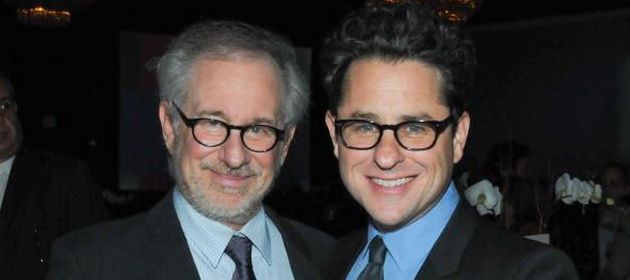
The sorcerer's apprentice
Whilst Super 8 might be the first jointly-made feature from J.J. Abrams and Steven Spielberg, it’s not actually the first time the two men have worked on the same project. Indeed, Abram’s first collaboration with his long-time idol arrived, appropriately enough, through the medium of Super 8 filmmaking.
Having come to The Beard’s attention at a Super 8 festival in the early ‘80s, Abrams and fellow filmmaker Matt Reeves were contacted by Spielberg’s office with an offer they could hardly believe, let alone refuse!
“We received a call after an article about the festival appeared in the LA Times ,” Abrams recalls in a recent interview with Time . “His assistant asked us if we would be interested in repairing the films Steven had made when he was our age. Of course we were convinced this was a prank phone call, and to this day it makes no sense to me why Steven would put the original prints of Firelight and Escape to Nowhere in the hands of two 15-year-old strangers.”
“But Matt and I did it,” he continues. “In 1982 it was especially rare, if not impossible, to have access to the early works of a director, let alone Steven Spielberg's. But while his films were, of course, far better than ours, it was an inspiration to see how he began.”
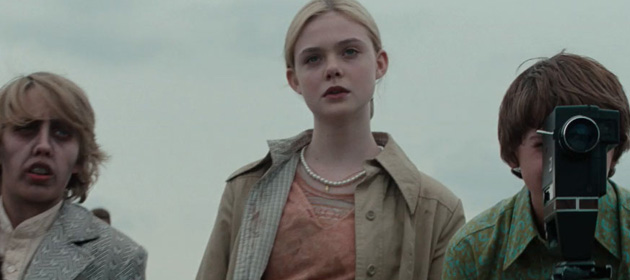
Shared history
With Spielberg a known admirer of Abrams’ professional work on both TV and celluloid the pair struck up a keen friendship, and began casting around for ideas for a project they could work on in tandem.
"We had spent maybe the better part of a year talking about the kind of films we love to see and the kind of films we’d love to make someday and which of those films had a mutual appeal,” explains Spielberg. “The one thing that we did land on immediately was our mutual history in making 8mm films.”
“I was telling him about all the adventures I had as a kid making little movies with my neighbourhood friends,” he continues, “and he had the same experiences. So we thought, wouldn’t it be cool to make a movie set in the '70s about young people making movies? 14-year-olds making 8mm movies! That’s how it all started.”
Various ideas were mooted as to what sort of movie this set-up could spawn, but perhaps inevitably, the pair landed on a science-fiction premise.
“J.J. came back to me and said, ‘What if we take the idea of making 8mm films, and blended it in with a larger time-worn genre,’” recalls Spielberg. “The idea was that they are making movies but something appears on their 8mm dailies that unlocks a mysterious event. We weren’t quite sure how sci-fi the event was going to be, but I loved that idea… ”
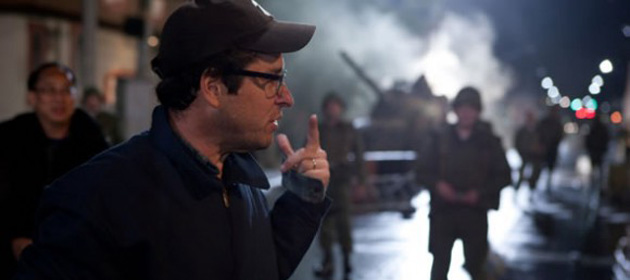
Confidence trick
So how would the two sci-fi super-brains work together? Would there be differences of opinion? Too many ideas for one film? Well according to Abrams, the pair worked in tandem like a well-oiled machine, with each man careful not to step on the other’s toes.
“It was such a privilege to work with Steven,” gushes Abrams. “We had countless story meetings before I started writing, finally ending with him telling me, ‘JJ. Go write.’ He was encouraging and critical in the most constructive ways. And because Super 8 is a Spielberg-produced movie - literally an Amblin film - it gave me license to embrace story elements that were in the DNA of the piece.”
This isn’t, of course, to say that the old master didn’t pull his weight. “He was wildly helpful in the development of the story,” insisted Abrams in a recent interview with SlashFilm . “He was wildly helpful in his opinions towards casting. He was in the editing room with me for hours and hours and just wonderful in that regard. He was a true collaborator and partner in this.”
Spielberg is equally warm in his praise for the younger man. “What makes J.J. really unique is that he’s technically proficient,” he told Flicks And Bits . “His craft is like he’s been directing for 30 years! He has an extraordinary sense of camera, lighting, composition and storytelling. He’s cut his teeth in television and been very successful, but the transition to movies has been effortless for him. He wont tell you that! He’ll tell you that it was really hard making the transition! It just appears to me that it was natural.”
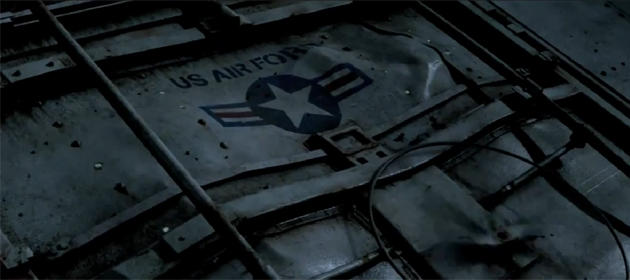
The plot thickens
This being a J.J. Abrams adventure, a certain element of mystery was always going to be on the cards. In the case of Super 8 , this mystery revolves around what exactly has battered its way out of the military’s reinforced cargo crate…
“I believe in anything that will engage the audience and make the story more effective,” says Abrams of his signature drip-feed technique. “I'll never forget seeing a deleted shot from Alien , where Veronica Cartwright's character is about to be attacked.
“The shot Ridley Scott chose not to keep in the film was a wide frame of the actress and the alien, which was completely contained within the frame and therefore the least scary thing imaginable. It's a remarkable lesson when you watch the final scene, given how terrifying it is. But withholding anything in a story is no good if you aren't building to something substantial.”
That very accusation was often levelled at Abrams’ audience-dividing hit Lost , but whatever your opinion on that show’s conclusion, it did at least manage to offer an answer to all that had gone before. However, with less room for manoeuvre in terms of running time, was Super 8 a trickier proposition, mystery wise?
“It was much harder than I thought it would be,” admits the director. “It took forever to structure this thing, both in script stage and post-production. I think this was mostly because it was the nexus of the film - the greatest fun and challenge - balancing a coming-of-age love story character piece with, essentially, a monster movie.”
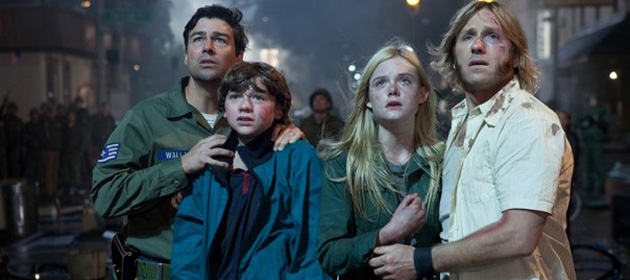
A family affair
Despite Abrams’ description of the film as a “monster movie”, this is no effects-driven blastathon. There’s plenty of heart on display as well, a combination fans of Spielberg’s work will find distinctly recognisable. Those expecting another Cloverfield will likely be in for a surprise.
An obvious comparison to be drawn is with Spielberg’s E.T. , with childhood loss taking centre stage in both pictures. In the case of Super 8 , that loss manifests itself in a father and son’s struggle to cope with the death of a wife and mother.
“I remember the complexity of being a kid,” says Abrams, “and all the type of fears that you had about ‘what if?’ In a way you could almost kind of quantify the encroaching adult world and the reality that you were, at some point or another [ going to be hurt ] by it. I didn’t go through a particular story like Spielberg did with a divorced family, but [ I could identify with ] the idea of loss and being without a parent.”
The film has a distinct coming-of-age feeling, enhanced by Abrams deliberate decision to cast his younger characters as 12-14-year-olds, just teetering on the brink of adolescence.
“It was also why I set the film in '79,” explains Abrams. “It was about the precipice of something. The end of a time. Encroaching young adulthood. I wanted to catch kids at the very edge of full-blown, raging puberty. The last moments of innocence…”
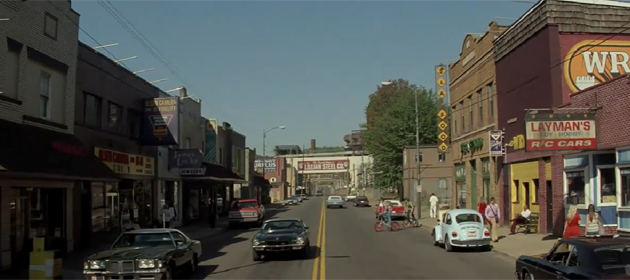
Location, location, location
Anyone who’s seen the trailer will know that Abrams has put a lot of work into creating an authentically ‘70s setting for his slice of small-town Americana. Filmed in Weirton, West Virginia (which also played host to parts of The Deer Hunter ), the choice of location was extremely important to the general feel of the film.
“The reason we chose Weirton was because of the great juxtaposition of the massive steel mill with their Main Street and suburban neighborhoods,” explains Abrams. “There was a poignancy in the visual of these kids growing up against the backdrop of an enormous, imposing factory. Also, since the main character's mother was killed in an accident at the mill, the idea that there was a constant reminder, every day of his life, of that horrible event, was powerful as well.”
However, Abrams admits that he wasn’t looking to create a watertight example of historical accuracy, rather a setting that matched his memory of the time and place.
“I told our cinematographer, Larry Fong that I didn't want the film to look like it was made in 1979, but I wanted it to look the way we remember films looking from 1979,” he explains. “That is to say, it needed to be its own thing, with visual and rhythmic motifs that allude to a different era of moviemaking, but made using tools and techniques of today. I sort of wanted to build a bridge between then and now. The story needed to stand on its own, but with nods to its origins and conventions of the genre.”
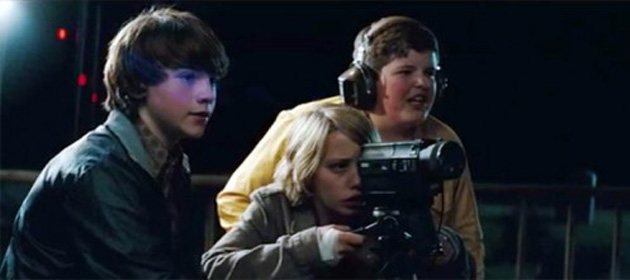
The kids are alright
Abrams and Spielberg went on to recruit a talented young cast for their band of intrepid young filmmakers, several of whom were virtual unknowns before the cameras began rolling. Lead actor Joel Courtney had never acted professionally before, but impressed casting directors with his seemingly boundless enthusiasm.
“Joel was really impressive,” recalls Abrams. "He lives in Idaho and once a month his family would drive him to an acting school in Seattle. That's how much he loved the craft and wanted to learn. Of course, like with any actor, you edit out the moments that don't work, but Joel gave the film an abundance of moments that did.”
“Apparently I did really well,” says Courtney. “They had me come back like 11 times, and then I kept getting acting coaches to help me through.” He had to do his homework though, chowing down on a staple diet of period-appropriate classics to bring himself up to speed.
“I had watched (and loved) E.T. and Close Encounters already,” explains the young star, “but I hadn’t watched Stand By Me and The Goonies , and so I watched those two during production and all of the references made sense.”
Not that they were swotting all the time. Indeed, Courtney’s co-star Ryan Lee describes participating in the action sequences as something akin to every young boy’s dream!
“We did a lot of takes on the (train crash) scene and I never got tired of it, because everything was so cool,” he says. “We were running through and dodging the explosions coming from the train or the Army tanks. It was a real adrenaline rush! We really had to run fast and reacting to the noise and explosions came naturally because they were so unexpected and loud! It was an amazing experience.”
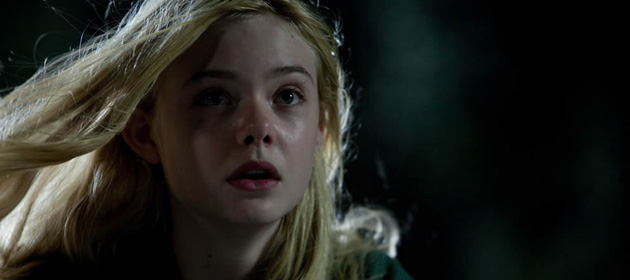
A star is born
Whilst Courtney has come in for plenty of praise from his director, the breakout star of Super 8 is undoubtedly Elle Fanning, who plays the lead in the youngsters’ film within a film. Fronting her very first summer tentpole movie, the pressure was on Ms. Fanning from the get-go, not least in the shape of some pretty serious secret-keeping.
“I didn’t want to spoil anything for anyone,” said Fanning to Collider . “I definitely didn’t want to be the one to spill it! I couldn’t even tell anyone that I’d got the part.” On top of that, there was the world of sfx to deal with, a challenging business for a seasoned actor, let alone one so young. “One of the harder parts of filming the movie was having to react to stuff that wasn’t actually happening," she says. "We had a lot of green screen work, but J.J. helped with that.”
She even got involved in a little screenwriting, with Abrams turning over responsibility for movie-within-a-movie The Case over to his young cast.
“We actually got to write The Case ,” beams Fanning. “J.J. let us write the whole script and we actually shot it with a Super 8 camera. So we can all say we’ve written and directed a Super 8 movie!”
Meanwhile, Abrams was more than thrilled with his young heroine. “I could bore you to tears about how spectacular Elle is to work with,” he begins. “She brought a realism and truth to the role, something that was surprisingly hard to find among young actors. I needed this to feel anti-Disney. It needed to be honest - the audience needed to love these real, relatable kids - otherwise you would never believe the wild events that follow. Elle was capable of great emotion, wonderful strength, ridiculous goofiness and a sweet vulnerability. Her character, it turns out, is as lost as anyone.”
George was once GamesRadar's resident movie news person, based out of London. He understands that all men must die, but he'd rather not think about it. But now he's working at Stylist Magazine.



